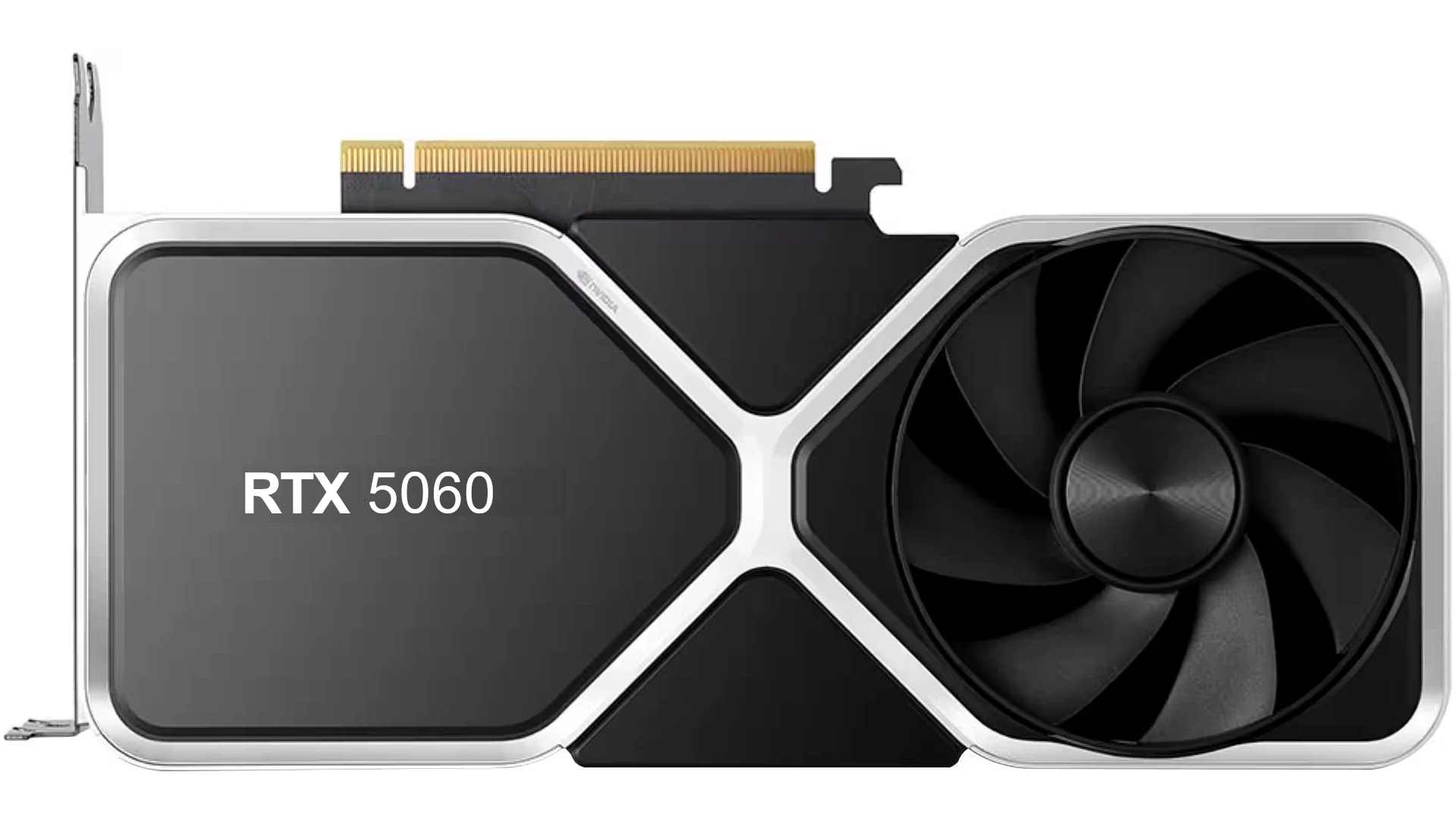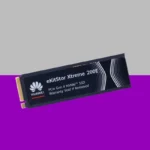The Nvidia GeForce RTX 5060 is set to be a new graphics card for gamers and PC enthusiasts. It’s expected to launch in 2025, bringing improved performance for modern games and applications. The RTX 5060 will likely be part of Nvidia’s next-generation GPU lineup, following the current RTX 40 series.
This upcoming graphics card is based on Nvidia’s GB206 GPU and will support the latest DirectX 12 Ultimate features. These include hardware ray tracing and variable-rate shading, which enhance visual quality in games. The RTX 5060 is designed to handle 1080p and 1440p gaming, with potential for 4K in less demanding titles.
GeForce RTX 5060: The Next-Gen Contender
While NVIDIA hasn’t officially lifted the curtain on the GeForce RTX 5060, the rumor mill is abuzz with exciting possibilities. This upcoming graphics card is poised to redefine the mainstream gaming segment, offering a potent blend of performance, features, and value. Let’s delve into the anticipated specifications and what they could mean for gamers.
Performance Expectations
The RTX 5060 is rumored to be a significant upgrade over its predecessor, the RTX 4060. Leaked benchmarks suggest it could rival or even surpass the RTX 4070 in raw performance. This leap is attributed to the new Blackwell architecture, which is expected to deliver substantial improvements in both rasterization and ray tracing.
Architectural Advancements
The Blackwell architecture, NVIDIA’s successor to Ada Lovelace, is anticipated to bring notable enhancements. These include:
- Increased CUDA Core Count: The RTX 5060 is rumored to boast around 6000 CUDA cores, a significant increase from the RTX 4060’s 3072. This translates to more parallel processing power for handling complex graphics workloads.
- Enhanced Ray Tracing Capabilities: Blackwell is expected to feature improved ray tracing cores, enabling more realistic lighting, shadows, and reflections in games.
- DLSS 3 Optimization: The RTX 5060 will likely leverage the latest version of DLSS (Deep Learning Super Sampling), further boosting performance and image quality.
Memory and Power Consumption
Rumors suggest the RTX 5060 could feature 16GB of GDDR6 memory, a substantial upgrade from the RTX 4060’s 8GB. This increased memory capacity will be crucial for handling demanding games at higher resolutions and with more detailed textures. The card’s power consumption is estimated to be around 150-180W, which is reasonable considering the expected performance gains.
Potential Impact on the Gaming Landscape
If these rumors hold true, the RTX 5060 could democratize high-fidelity gaming. It may offer a level of performance previously unseen in the mainstream price segment, making it an attractive option for gamers seeking a balance of power and affordability.
Table: Rumored RTX 5060 Specs vs. RTX 4060
| Feature | RTX 5060 (Rumored) | RTX 4060 |
|---|---|---|
| Architecture | Blackwell | Ada Lovelace |
| CUDA Cores | ~6000 | 3072 |
| Memory | 16GB GDDR6 | 8GB GDDR6 |
| Memory Bus | 192-bit | 128-bit |
| Power Consumption | 150-180W | 115W |
What We Know About The RTX 5060
You’re right, the GeForce RTX 5060 hasn’t been officially announced yet, but the rumor mill is churning! Here’s a summary of the latest whispers surrounding NVIDIA’s next-gen mainstream card:
Release Date
- March 2025: Several sources suggest the RTX 5060 (and possibly a 5060 Ti) could launch as early as March 2025. This would be a surprisingly fast rollout for the entire RTX 50 series lineup.
Performance
- Significant Upgrade Over RTX 4060: Early rumors hint at a considerable performance jump over the current generation. Some speculate it could even rival the RTX 4070 in raw power.
- Improved Ray Tracing: Expect advancements in ray tracing capabilities, offering more realistic lighting and reflections in games.
- DLSS 3 Enhancements: The RTX 5060 will likely support the latest version of DLSS (Deep Learning Super Sampling), further boosting performance and image quality.
Specifications (Rumored)
- Architecture: Blackwell (successor to Ada Lovelace)
- CUDA Cores: Around 6000 (significantly more than the RTX 4060’s 3072)
- Memory: Possibly 16GB GDDR6 (a substantial increase from the RTX 4060’s 8GB)
- Memory Bus: 192-bit
- Power Consumption: Estimated to be around 150-180W
Price
- Competitive Mainstream Pricing: While it’s too early for concrete pricing, NVIDIA will likely aim to keep the RTX 5060 within the typical price range for mainstream cards (around $300-$400).
What This Means for Gamers
If these rumors hold true, the RTX 5060 could be a game-changer for budget-conscious gamers. It may offer a level of performance previously unseen in this price segment, making high-fidelity gaming more accessible.
Important Note: Remember that these are just rumors, and NVIDIA hasn’t confirmed any details. It’s best to wait for official announcements before making any purchasing decisions.
Table: Rumored RTX 5060 Specs vs. RTX 4060
| Feature | RTX 5060 (Rumored) | RTX 4060 |
|---|---|---|
| Architecture | Blackwell | Ada Lovelace |
| CUDA Cores | ~6000 | 3072 |
| Memory | 16GB GDDR6 | 8GB GDDR6 |
| Memory Bus | 192-bit | 128-bit |
| Power Consumption | 150-180W | 115W |
Key Takeaways
- The RTX 5060 will support advanced graphics features for modern games
- It’s designed for high-performance gaming at 1080p and 1440p resolutions
- The card is expected to use new GDDR7 memory for improved speed
Graphics Chip Specs
The RTX 5060’s graphics chip is called GB206. It uses NVIDIA’s Blackwell 2.0 architecture. TSMC makes the chip, but the exact process size isn’t known yet. The number of transistors and die size are also not public.
This chip will power NVIDIA’s next mid-range GPU. It should offer good performance for gamers who don’t need the most expensive cards. The Blackwell architecture brings new features to improve graphics and AI tasks.
New Graphics Cards on the Horizon
The GeForce RTX 50-series is set to launch in 2025. It will follow the current 40-series lineup. The new cards will use PCIe 5.0 x16 slots. This next generation aims to boost gaming and AI performance.
Key models may include:
- RTX 5060
- RTX 5070
- RTX 5080
- RTX 5090
Some cards might have “Ti” versions for extra power. The RTX 5060 could be a good choice for 1080p gaming. Higher-end models like the 5090 will target 4K and 8K resolutions.
Prices are not yet known. But new tech often costs more at first. Fans hope for better value than past launches.
GPU Speeds
The RTX 5060’s clock speeds are fast. Its base speed is 2235 MHz. The boost speed reaches 2520 MHz. Memory runs at 1750 MHz, giving 22.2 Gbps effective speed. These high rates help the card perform well in games and other tasks.
Memory Specs
The RTX 5060 comes with 8 GB of GDDR7 memory. It has a 128-bit memory bus. This setup offers a bandwidth of 355.0 GB/s.
| Memory Type | Size | Bus Width | Bandwidth |
|---|---|---|---|
| GDDR7 | 8 GB | 128-bit | 355.0 GB/s |
GDDR7 is the newest type of graphics memory. It’s faster than the GDDR6 and GDDR6X used in older cards. The 128-bit bus is narrower than some high-end GPUs. But the new memory tech helps keep speeds high.
Graphics Processing Specs
The RTX 5060 packs 4608 shader units for fast rendering. It has 144 texture mapping units to handle textures quickly. With 48 render output units, it can output many pixels at once.
The card has 36 streaming multiprocessors. Each one has its own 128 KB L1 cache. There’s also 32 MB of L2 cache shared by all SMs.
For AI tasks, it includes 144 tensor cores. Ray tracing gets a boost from 36 RT cores. This mix of cores helps with both gaming and work apps.
Performance Metrics
The RTX 5060 boasts impressive specs. It can process 121.0 GPixel/s and 362.9 GTexel/s. For AI tasks, it delivers 23.22 TFLOPS in FP16 and FP32. Double precision work runs at 362.9 GFLOPS. These numbers suggest strong gaming and compute abilities.
Card Design
The RTX 5060 fits in two slots. It needs 170 watts of power. A 450-watt power supply works best. The card has one HDMI 2.1 port and three DisplayPort 1.4a ports. It uses one 16-pin power plug.
Advanced Graphics Capabilities
The RTX 5060 supports DirectX 12 Ultimate, OpenGL 4.6, OpenCL 3.0, and Vulkan 1.3. It uses CUDA 10.1 and Shader Model 6.8. These features allow for better graphics and faster performance in games and other apps.
Ray tracing makes games look more real. DLSS helps boost frame rates. Frame generation can make games smoother. The RTX 5060 likely improves on its older version in these areas.
GPU Features for Blackwell
The GB206 GPU has new parts. It has 4th gen ray tracing cores and 5th gen tensor cores. The video encoder is 9th gen. The video decoder is 6th gen. It uses VP13 PureVideo HD tech. The VDPAU feature set is M.
The latest drivers work with Windows 10 and 11. They come in GeForce, Quadro, and Data Center types. These drivers let the GPU work well with different software.







